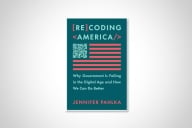You have /5 articles left.
Sign up for a free account or log in.
If a college’s enrollments drop by four percent, should we expect its instructional costs also to drop by four percent?
Nope. But I keep running into well-meaning people who don’t know that, or don’t know why. And some of them are in positions to do real, if unintended, harm if they don’t understand it.
So, in the interest of educating the public about public education, here goes, in Q and A form.
“Leaving inflation out of it, why don’t instructional costs track enrollments proportionally?”
At a really basic level, instructional costs are per section, not per student. If a section that ran with 30 students last year runs with 29 this year, the enrollment is down a little over three percent. But it costs the college just as much at 29 as it did at 30. The room is the same, the instructor is paid the same, all of the support services are the same. Enrollment is down, but cost is not.
“But wait! Wouldn’t the drop average out over a large number of sections?”
Not really. Most courses don’t have all that many sections. We might see slight declines in the number of sections in a few of the “greatest hits,” like English Composition or Intro to Psych. But most courses don’t run enough sections to make a four percent drop meaningful. Most courses run fewer than ten sections a semester, scattered over different days of the week and times of day. Student schedules are not infinitely fungible; a student who could take the Tuesday morning section of a given course may not be able to take the Thursday afternoon section of the same course. That makes it impossible to “optimize” enrollments the way you might optimize a hard drive. Online sections are easier to swap, since they aren’t bound by times and rooms, but they’re still a minority of what’s offered.
“Okay, I get the distinction between sections and students. But if you manage to cut the number of sections by four percent, you should still realize savings of four percent, right?”
Nope. That’s because full-time faculty are paid more than adjunct faculty, and full-timers have to “make load.”
If you have fifty sections to cover in a department in a given semester, and you have five full-timers teaching five sections each, then you need 25 covered by adjuncts. Then enrollment drops, so you run two sections fewer than before, or a cut of four percent. You still have five full-timers teaching five sections each, but now you’re down to 23 sections covered by adjuncts.
For the sake of argument, let’s say the average full-timer makes three times what the average adjunct makes, once you account for benefits. (That’s a pretty realistic number.) That’s 25 sections at 3x plus 25 sections at x, for a total pre-drop cost of 100x for 50 sections. Drop two adjunct sections, and your post-drop cost is 98x. Reducing sections by four percent reduced costs by only two percent. And that’s assuming you were able to reduce sections by four percent, which would be pretty impressive.
“That’s frustrating. Wouldn’t single-payer health care drive down the cost of benefits?”
That’s another post entirely.
“Maybe the problem is administrative bloat!”
Nice try, but no. In the community college sector, spending on administration is on a long-term decline. The decline accelerated with the Great Recession. That argument may or may not hold water at research universities, but it’s false here.
“Well, at least you’re making big profits on all those remedial classes you make students take!”
Nope. We run foundational skills classes with smaller class sizes and more tutoring support. We lose money on them.
“What the hell kind of business plan is that?”
Community colleges are non-profits with a social mission. We’re here to serve students and the community. We serve all comers, including the risky students everyone else turns away.
“So if you serve the neediest members of the community, why do you get the least public funding of any sector of higher education?”
(pause)
(crickets chirping)
Well...



